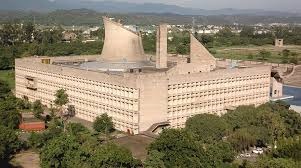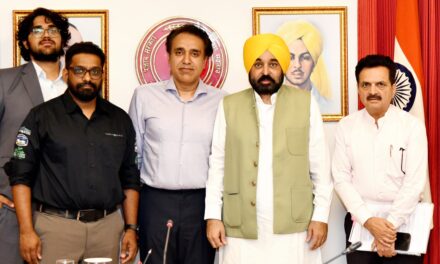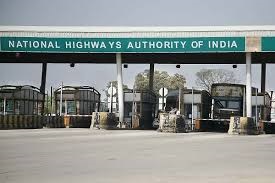Toll-Free for 20 km: India’s New Highway Rules and the Future of Toll Collection with GNSS Technology
In a significant move aimed at easing the burden on private vehicle owners, the Ministry of Road Transport and Highways has introduced a major update in the toll collection system across India. The new National Highways Fee (Determination of Rates and Collection) Amendment Rules, 2024, allows drivers to enjoy toll-free travel for short distances, making road travel more affordable and efficient for millions of daily commuters.
The key highlight of this amendment is that private vehicle owners can now travel toll-free for up to 20 kilometers on national highways, expressways, bridges, and tunnels, provided their vehicles are equipped with a Global Navigation Satellite System (GNSS) On-Board Unit. This satellite-based technology tracks the actual distance traveled, eliminating the need for manual toll payments or stopping at toll booths.
Let’s dive deeper into what this new rule means for road users and how it will impact the future of toll collection in India.
What Is the New Toll Rule?
The new toll rule introduces a significant change by allowing toll-free travel for distances up to 20 kilometers. This rule applies to private vehicles that are fitted with a GNSS On-Board Unit, a system that uses satellite-based tracking to monitor the distance a vehicle travels on highways.
If a vehicle travels more than 20 kilometers, the toll will be charged based on the actual distance covered beyond that limit. The GNSS technology offers a seamless experience for drivers, as toll fees will be automatically deducted based on distance, reducing traffic at toll plazas and eliminating manual toll payments.
Who Benefits from This Rule?
The biggest beneficiaries of this new toll policy will be private vehicle owners who frequently use highways for short-distance travel. Commuters who take the same highway routes daily, whether for work, school runs, or errands, can now avoid paying toll fees for trips under 20 kilometers.
For instance, people living in suburban areas who travel to nearby cities for work will significantly benefit from this system. With the integration of GNSS technology, the toll collection process will become more efficient and tailored to the needs of frequent short-distance travelers.
Commercial vehicles with national permits are excluded from this policy. However, the system is expected to greatly reduce the traffic bottlenecks seen at toll plazas due to manual payments or insufficient balance in FASTag accounts.
How Will GNSS Technology Work?
The GNSS On-Board Unit will be the key to this new toll system. This technology, which operates via satellite-based tracking, will automatically measure how far a vehicle has traveled on the highway. Based on the distance, the toll will be calculated and deducted for any trip exceeding the 20 km toll-free limit.
The Ministry of Road Transport and Highways has been testing this system through pilot projects to ensure a smooth transition. While FASTag has been the primary toll collection method so far, the introduction of GNSS is expected to revolutionize the toll system by making it more efficient and user-friendly. FASTag will continue to operate, but GNSS has the potential to become the primary system for toll collection as it develops.
What Are the Key Features?
Some of the notable features of the new system include:
- 20 km Toll-Free Travel: Private vehicle owners will enjoy toll-free travel for up to 20 kilometers on national highways, provided they have a GNSS unit installed in their vehicle.
- Automatic Toll Calculation: For journeys longer than 20 km, tolls will be automatically calculated based on the exact distance traveled.
- Exclusive GNSS Lanes: The Ministry plans to introduce dedicated lanes for vehicles equipped with GNSS units. Drivers using these lanes without a functioning GNSS unit will face penalties, including being charged double the regular toll fee.
This new technology is set to make toll collection smoother and reduce traffic congestion at toll plazas, as vehicles with GNSS will no longer need to stop for manual payments or even rely solely on FASTag.
Transition from FASTag to GNSS: Will It Replace the Current System?
The introduction of GNSS does not mean an immediate replacement of FASTag, which will continue to be used for the time being. However, experts believe that GNSS could become the dominant toll collection system in the future. According to Jagannarayan Padmanabhan, Director and Practice Lead at CRISIL for Transport and Logistics, this initiative is a step in the right direction, but its success will depend on overcoming operational challenges and managing implementation costs.
The Ministry’s plan to gradually transition from FASTag to GNSS depends largely on how well the new technology is received by drivers and the ease with which it can be rolled out across the country.
Conclusion: A Step Toward More Efficient Toll Collection
The new toll-free rule for 20 kilometers of travel marks an exciting shift in how tolls are collected on Indian highways. By integrating GNSS technology, the Ministry of Road Transport and Highways is working toward making toll collection more seamless, reducing traffic at toll plazas, and enhancing the overall driving experience for millions of daily commuters.
With the continued use of FASTag and the potential of GNSS to take over in the future, the way India collects tolls could undergo a transformative change, making road travel more efficient, especially for short-distance travelers.
As the system is rolled out across the country, private vehicle owners will enjoy more cost-effective travel and a smoother, more convenient highway experience.




